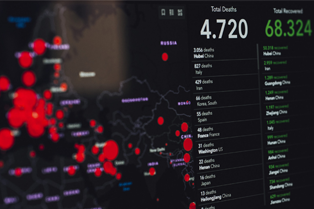Months into COVID-19, governments the world over begin to lighten their respective quarantines. For some, this marks the return to a familiar state of affairs– a whole world, outside one’s home. The promise of normalcy, while comforting, may not be enough to assuage the growing fear of a second wave to the pandemic.
Reopening the global economy in earnest leaves many with a moral conundrum. For entire sections of society, it’s impossible to survive without a regular stream of income. If the pandemic doesn’t kill you, hunger and a lack of access to essential resources likely will– not the rosiest outlook by any stretch.
In all likelihood, we’re going to see a huge spike in person-to-person contact as savings dry out, and markets reopen. What does this spell for the immediate future? Depending on where you live, it’s going to be a gamble– with the sobering implication of a losing hand costing your life or that of someone you love.

Cresting on the coming wave
So, what’s the deal with the second wave, and where will it come from? According to the World Health Organization, there isn’t enough evidence to indicate a consistent pattern of antibody-mediated immunity. While recent developments suggest that the virus isn’t reinfecting previously treated patients, there is still the risk of possibly acquiring COVID-19 from individuals who were cleared after improper screening.
New infection rates continue to climb in places like the United Kingdom and Russia. Migrant workers in Asia and the Middle East among others are also in a particularly precarious spot, given their typical living conditions abroad. For countries like the Philippines, this has already proven to be the case. Combined with an inconsistent global response, the anticipation of a second wave of infection is palpable.
The United States is dead set on reopening the economy in the coming months, despite the looming threat. On the other hand, Europe appears to be bracing for impact, following warnings from the European Centre for Disease Prevention and Control (ECDC). Warmer weather might mute the infection rate for the time being, but experts caution against complacency as the second wave may arrive in the fall.
2018 statistics place the global population of senior citizens at about 9%. For perspective, that means up to 702,000,000 elderly people are at risk right now. This isn’t just a risk for the elderly, though. Up to a third of the world’s total population lives with up to five ailments at a time, and with varying degrees of immune system compromise. Scary numbers, for sure, but the thing with statistics is no one gets how close they are until it hits someone they know. Will government and private sector response drop the ball again? That remains to be seen.




